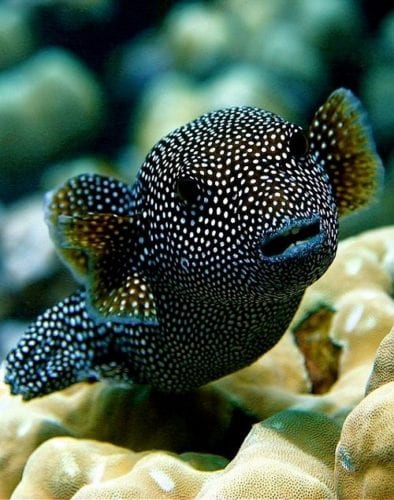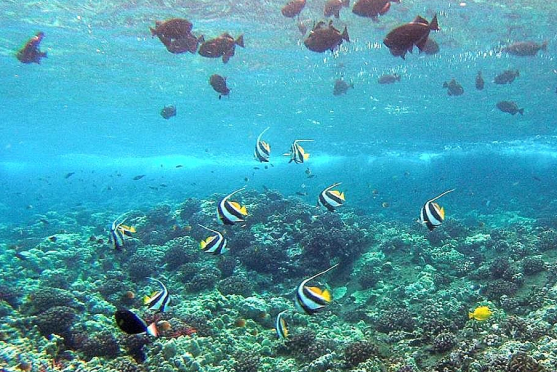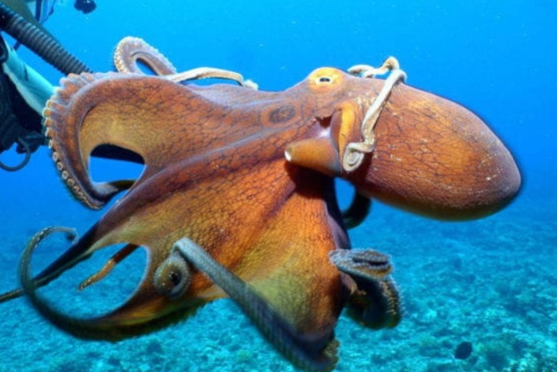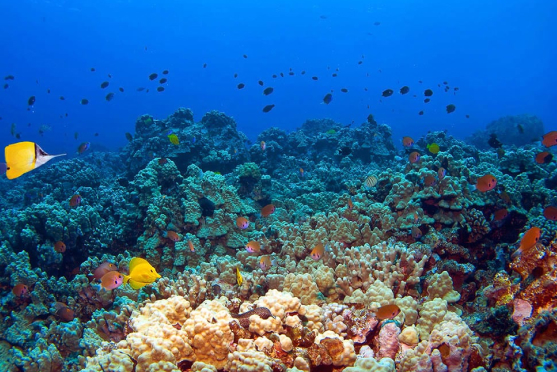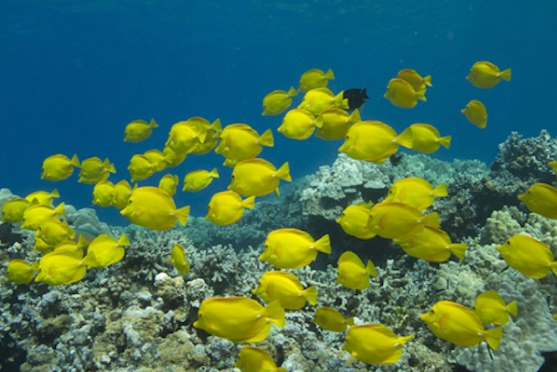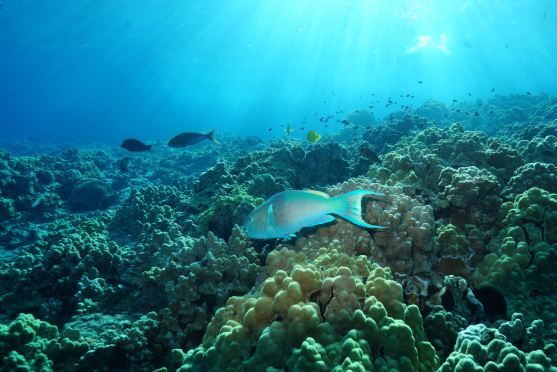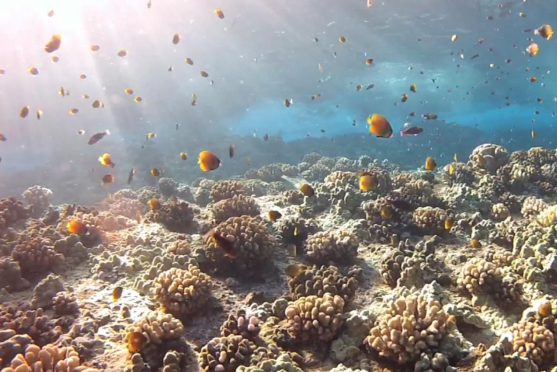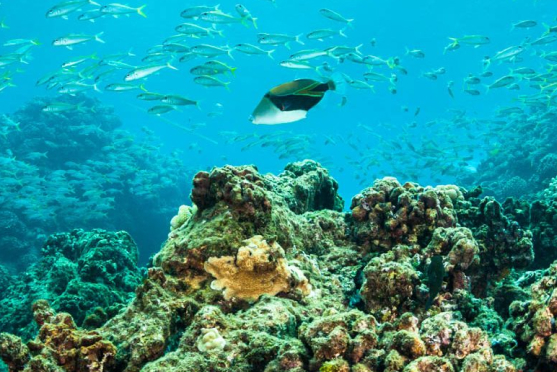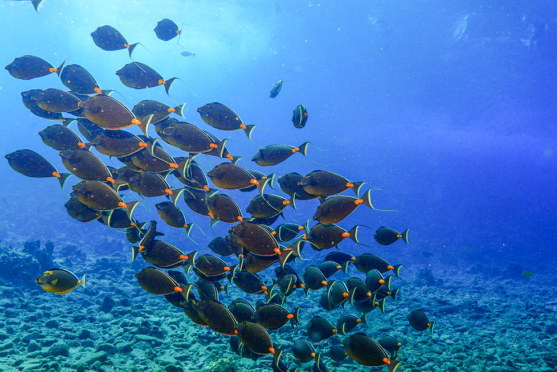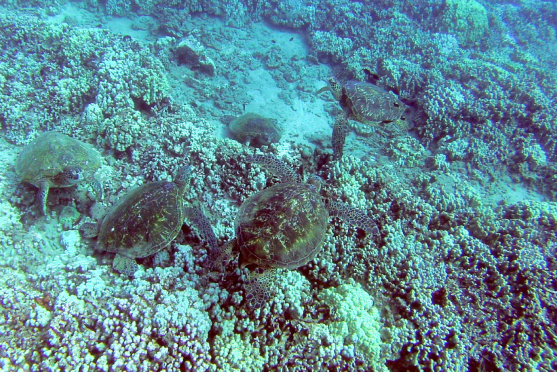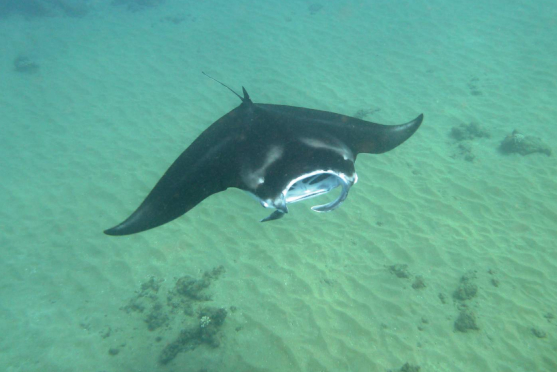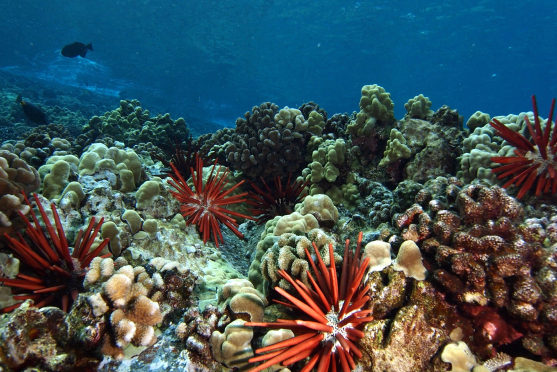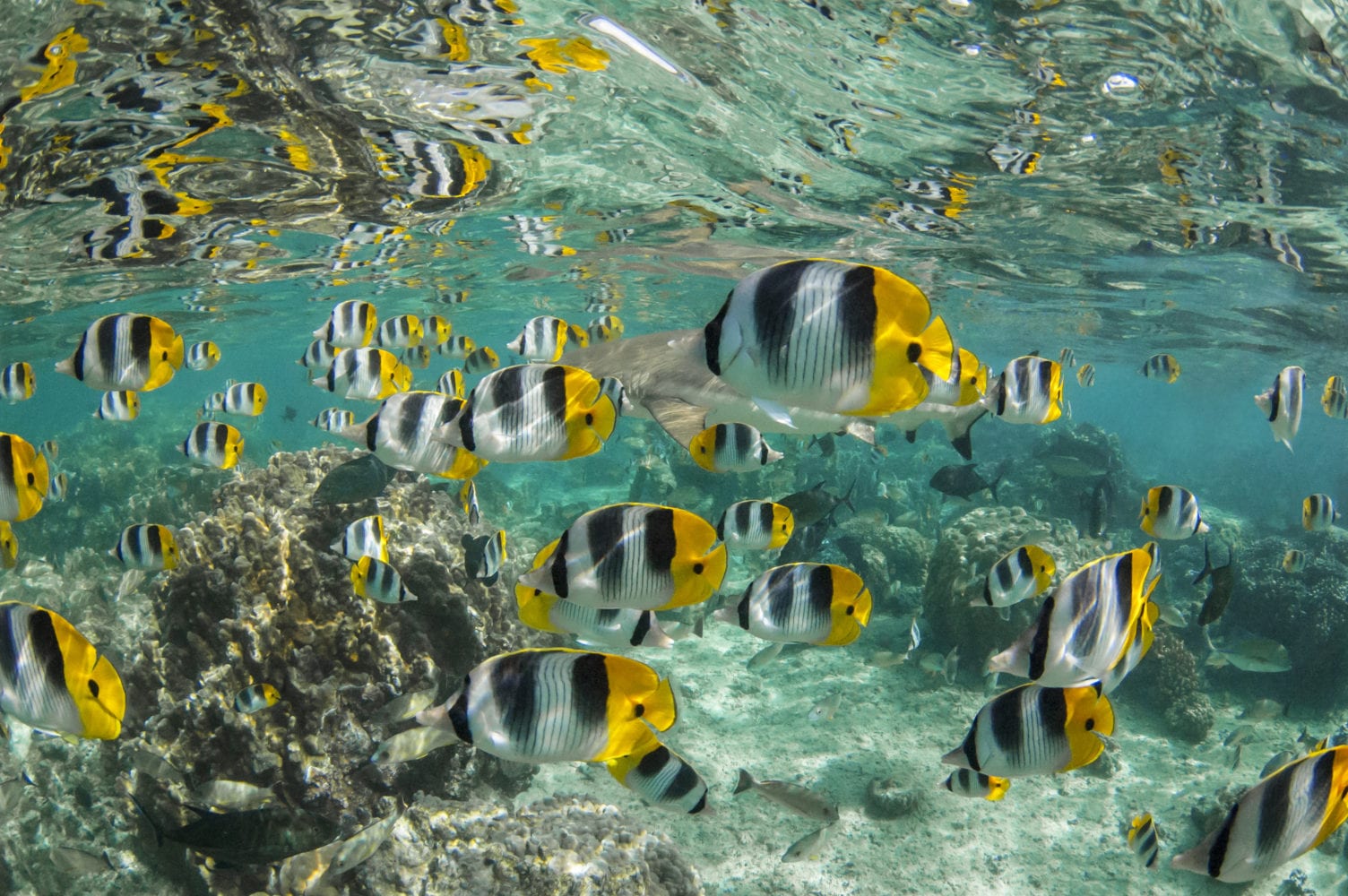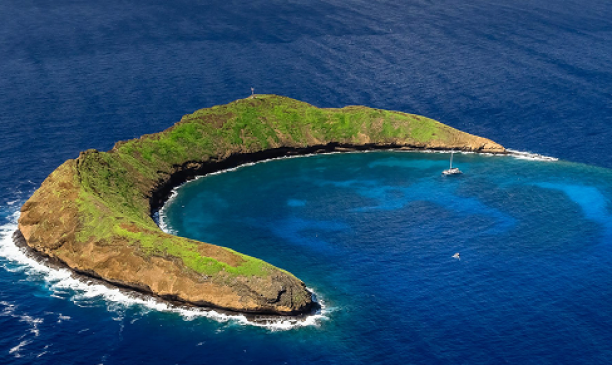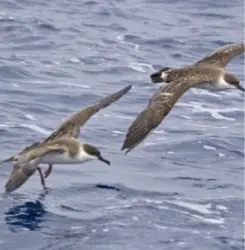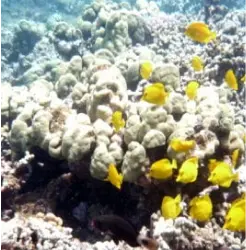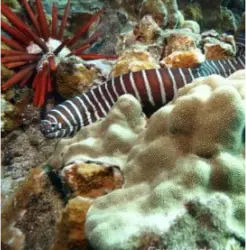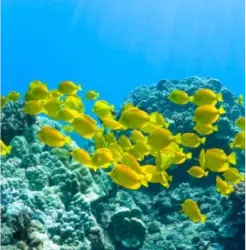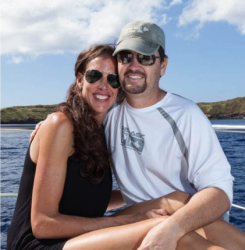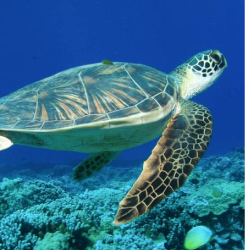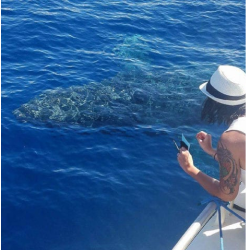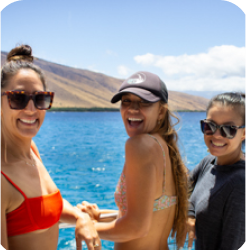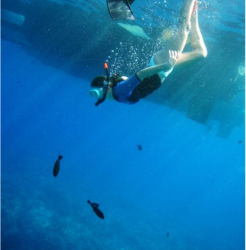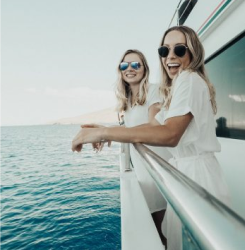Snorkel Molokini Crater – Maui’s Premier Snorkeling Destination
Molokini Crater is Maui’s top snorkeling site, known for its offshore location and exceptional visibility. Its crystal-clear tropical waters are home to a diverse array of fish and marine life, all located within the crescent-shaped volcanic caldera.
Today, Molokini Crater is a protected Marine Life Conservation District and a designated Hawai‘i State Seabird Sanctuary, ensuring its beauty and biodiversity remain untouched.
Join us and discover why Molokini is considered one of the best snorkeling spots on Maui!
Molokini Crater
Molokini Crater is a partially submerged, crescent-shaped volcanic crater located about 2.5 miles (4 km) off the southwestern coast of Maui. It is one of the top snorkeling destinations in Hawaii due to its crystal-clear waters, diverse marine life, and unique geological features. Here’s why it’s such a sought-after spot:
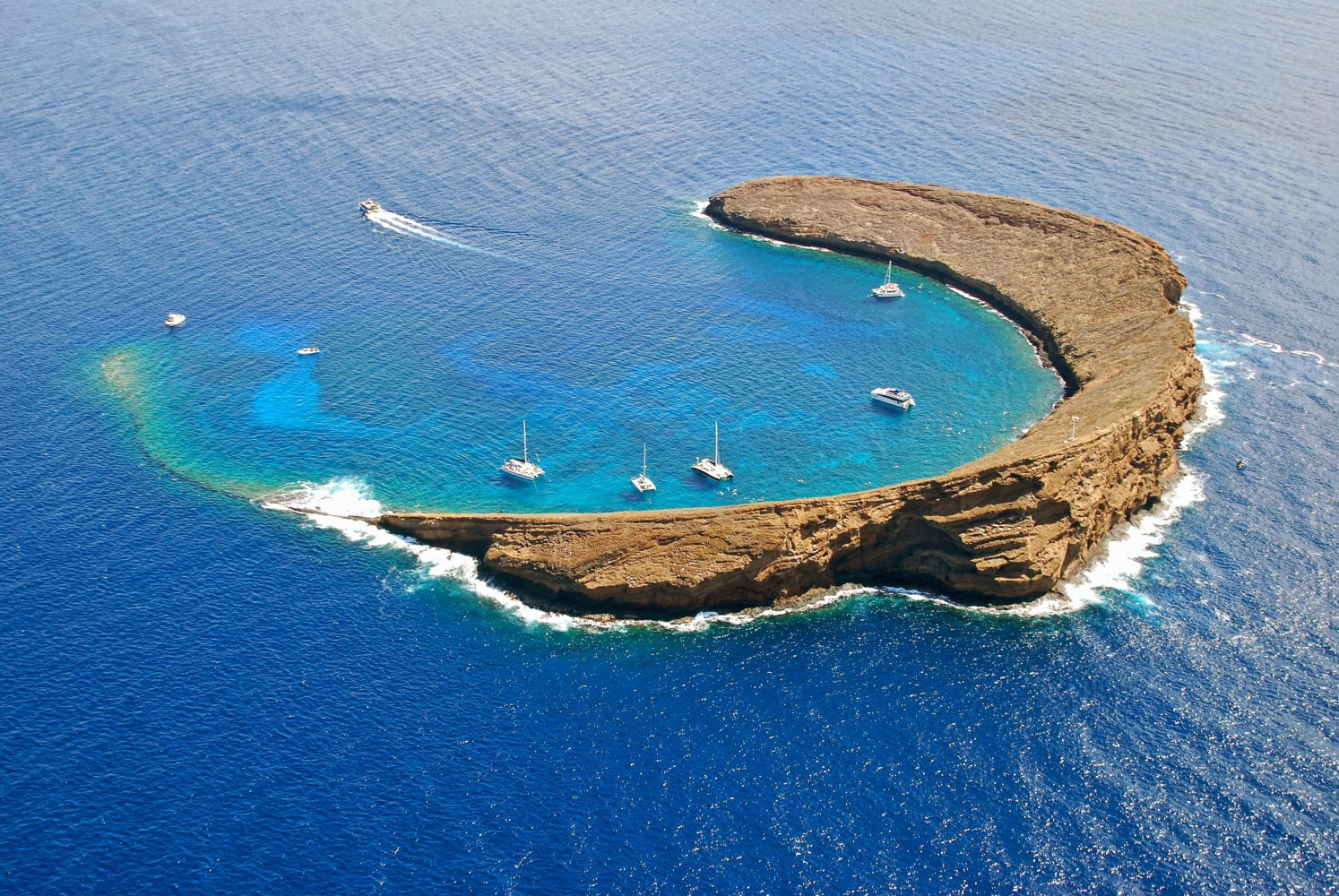
Exceptional Visibility
The water clarity at Molokini is some of the best on Maui, with visibility often exceeding 150 feet. This makes it ideal for snorkeling and SNUBA diving.
Molokini does not feature a sand beach. Instead, the cove slopes downward to about 100 feet before dropping off into the deep ocean floor. The bottom of the cove is a mix of sand patches, coral, basalt rocks, and boulders.
Premier SNUBA Diving Spot
Molokini is also one of Hawaii’s top SNUBA dive sites, offering the opportunity to explore deeper areas that are inaccessible while snorkeling.
Bird Sanctuary
The uninhabited islet is also a Hawaii State Seabird Sanctuary, home to nesting seabirds like wedge-tailed shearwaters and great frigatebirds.
Accessible by Boat Tours
Molokini is only reachable by boat. Various tour companies, such as the Four Winds Maui and the Maui Magic, operate daily snorkeling trips from Maʻalaea Harbor.
Historic and Geological Significance
The crater is estimated to be over 230,000 years old and was formed by various volcanic eruptions. Ancient Hawaiians used Molokini for fishing and hunting seabirds. During World War II, the U.S. military used Molokini for bombing practice, and remnants of this activity can still be found underwater today.
Best Time to Visit
Molokini is great year-round, but the best conditions are usually in the morning when the waters are calm, and the winds are low. From December through April, you can also enjoy the added bonus of whale watching!
Molokini Crater Fun Facts:
- Molokini is world renowned for its exceptional water clarity with visibility up to 150 feet.
- The volcanic crater formed from an eruption that occurred about 230,000 years ago.
- Molokini is home to about 250 types of marine species.
- There are 38 diverse types of hard coral species inside Molokini Crater.
- The island is home to at least 2 distinct species of nesting seabirds.
- Molokini is a Marine Life Conservation District and the island is a Hawaii State Seabird Sanctuary.
- Molokini’s literal translation means “many ties”.
- The exact location of Molokini can be located using the GPS coordinates of 20.632617, -156.495958.
- Go Early in the Morning – The water is usually the calmest and clearest before 10 AM. Afternoon trips rarely make it to the crater, since afternoons are windier and choppier.
- Winter = Bonus Whale Watching! If you visit between December and April, you might see humpback whales on the boat ride to Molokini.
